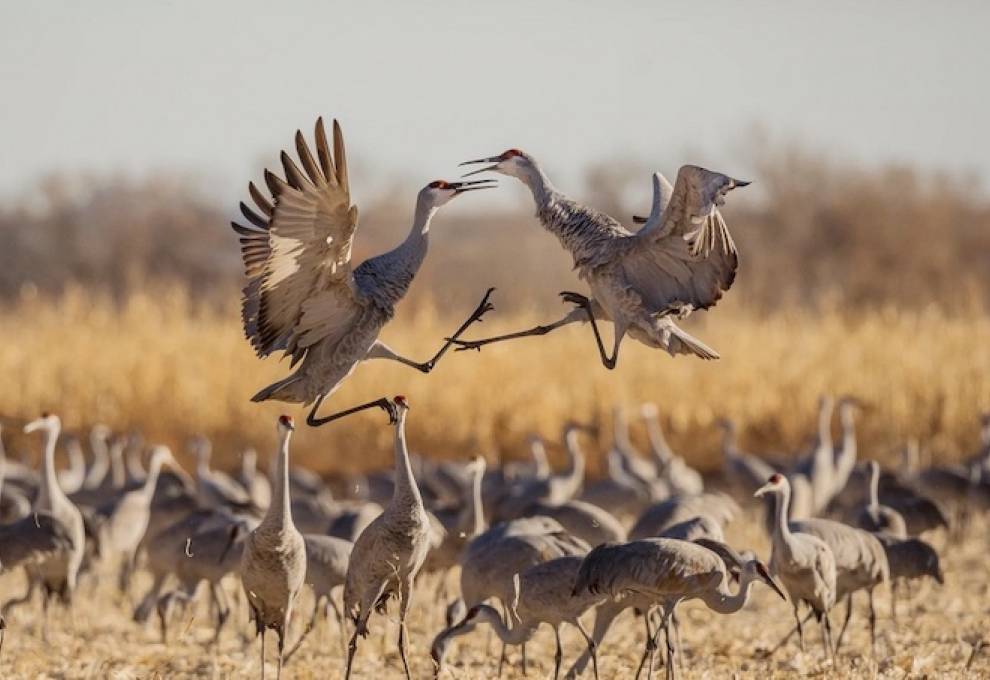
Potato growers in the Sudbury, Ontario area are complaining of major devastation of crops by sandhill cranes. Once an endangered species, their numbers have exploded in recent decades. According to the Nature Conservancy of Canada, the sandhill crane is now the most abundant species of cranes in the world.
Growers are now invited to participate in a survey on the conflict between this species and agricultural operations. University of Waterloo researchers are working closely with Environment and Climate Change Canada to capture and radio-mark sandhill cranes. They are tracking birds to assess habitat selection, movement ecology, and to better understand the potential for conflict with agricultural producers.
Principal investigator, Brad Fedy, is leading the study which will assess agricultural damage caused by migratory birds and other ways they may impact farming operations, and how agricultural producers feel about the feasibility and effectiveness of management practices currently available to minimize impacts of migratory birds and sandhill cranes on agricultural production. Engagement with agricultural producers will provide important insight in the development of practices and policies to sustainably manage sandhill crane populations and promote human-crane coexistence.
This study is being undertaken as part of a faculty level research project through the Fedy lab in collaboration with the Canadian Wildlife Service. Data collected from this study may be shared with the Canadian Wildlife Service to further assess agricultural damage caused by migratory birds and evaluate the efficacy of mitigation strategies employed to reduce conflicts.
To take part in the survey, link here: https://uwaterloo.ca1.qualtrics.com/jfe/form/SV_6fivyc2FtqwnxJA
Source: Ontario Federation of Agriculture bulletin, University of Waterloo website

Add new comment